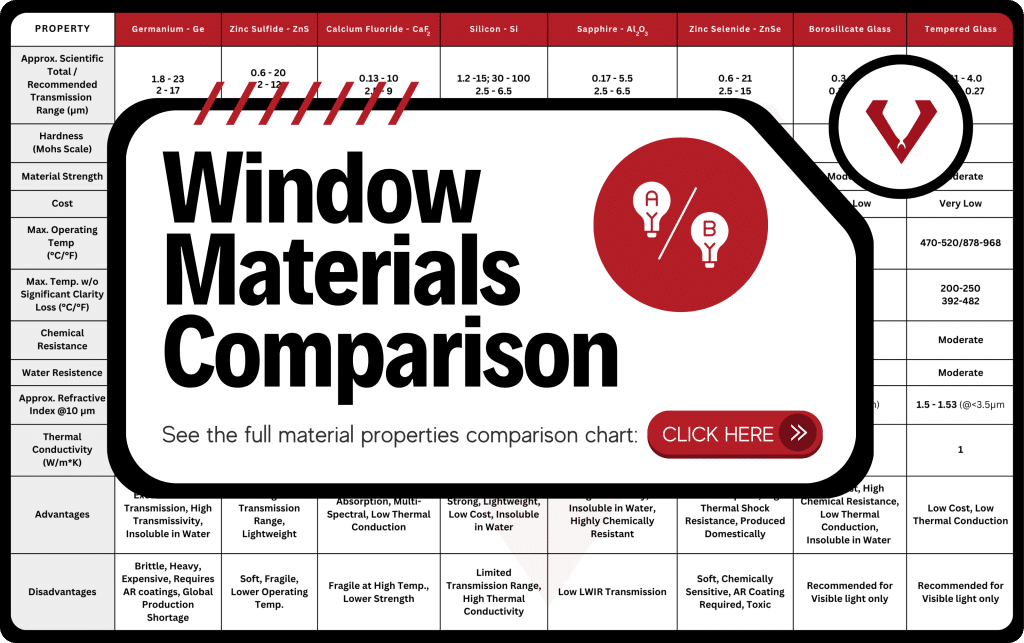
Selecting the right window material is critical to ensuring reliable performance of camera enclosures in demanding industrial environments. Factors like transmission range, durability, thermal resistance, and chemical stability all impact system accuracy and longevity. Additionally, import restrictions, tariffs, and embargoes—such as those affecting germanium—may limit access to traditionally preferred materials, making it essential to explore viable, cost-effective alternatives tailored to specific applications.
When operating in harsh conditions, IR sensors must be protected by rugged enclosures while maintaining a clear image and accurate temperature reading. Proactive monitoring of industrial processes can inform and improve production efficiency, quality assurance, and safety of employees.
However, achieving effectiveness in this monitoring requires high accuracy and precision. A critical step in designing an infrared or visible light monitoring system is selecting the right window materials. Environmental factors can degrade image quality, lead to inaccurate temperature readings, and even cause physical damage to the window, which might block entire sections of the field of view.
>> Check out our window material properties chart at the end of this article for a comprehensive comparison view.
Properties to Consider
Different materials will have varying properties that are important to consider, such as the range of light they allow to pass through, their performance in high temperatures or harsh environments, as well as their durability, availability, and cost. Here are key factors to consider when selecting the right window material for your application.
Transmission Range (µm)
The transmission range, with respect to a window material, is the range of wavelengths that can pass through without significant energy loss, presented as the transmissivity %. Each subject and its property/properties of interest may require different wavelengths of the IR spectrum or even visible light to provide an accurate and complete measurement. When choosing a window material, the first consideration should be its application, as each material has a range of wavelengths that may be transmitted to the camera sensors without significant energy loss.
Hardness (Mohs or Knoop Scale)
The hardness of the material indicates its resistance to surface damage from abrasion. Cameras that will be mounted near flying debris will require more durable windows to both protect the camera and reduce defects in the window that could lead to blind spots in the camera’s field of view.
Material Strength
Windows in harsh environments must have high resistance to impacts and mechanical stress, which can result from flying debris, vibration at the camera mounting location, or thermal expansion of enclosure components. However, in some cases, lower-strength materials can be supplemented with protection grids. Material strength and hardness are both important factors in the overall durability of the window.
Cost & Availability
When it comes to high-performance materials, their increased cost may not always be necessary, especially depending on the specific needs of the application. Germanium, considered the “gold standard” in IR window materials, is currently in a global shortage due to export controls out of China, which leads global production by a wide margin, high demand in critical and growing industries like fiber optic communications, semiconductor alloys, machine vision applications, and solar energy generation, and low recycling rates, only 3-5% of all produced germanium. While many countries are attempting to increase production and introduce recycling initiatives, a resolution will likely take several years.
Max Operating Temperature (°C)
Some materials may lose transmissivity or clarity when exposed to excessive heat; this can be due to an increase in absorption of IR radiation into the material (Thermal Runaway) as well as mechanical failures within the structure of the material. Long-term averages and short-term “spikes” of high temperatures of the surroundings should be considered when selecting a window.
Chemical Resistance
Chemical resistance is a measurement of how the material reacts to things such as moisture, corrosives, and other chemicals. Cameras that will be in humid or corrosive environments will require higher chemical resistance to maintain their transmissivity and clarity.
Refractive Index (@10 µm)
The refractive index of a material affects how much light bends as it passes through the material, generally at the surfaces. Window materials with a higher refractive index will require anti-reflective (AR) coatings to allow more light to reach the sensor. Anti-reflective coatings on the sensor side of the window will also keep the reflection of the camera from blocking the view of the subject (Narcissus Effect) and improve the operation of autofocusing cameras.
Thermal Conductivity (W/m·K)
Thermal Conductivity is the ability of the material to dissipate heat. High thermal conductivity is an important factor in IR systems as they often are located in high-temperature environments. Choosing an appropriate Thermal Conductivity value is critical to avoid thermal distortion or damage, both for the camera, as well as the window itself.
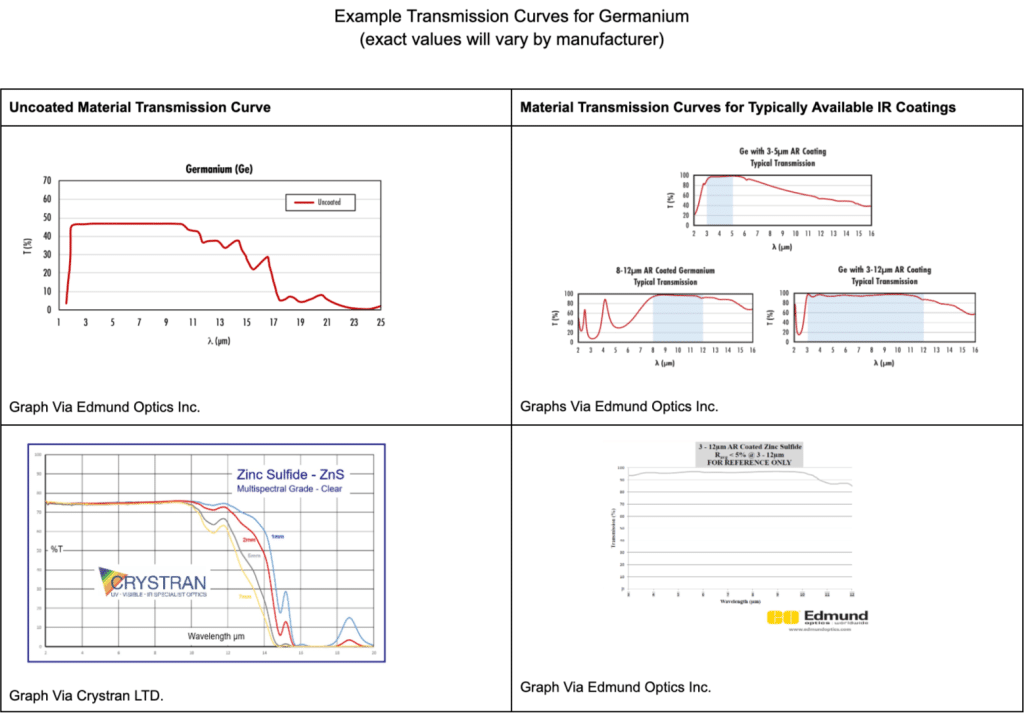
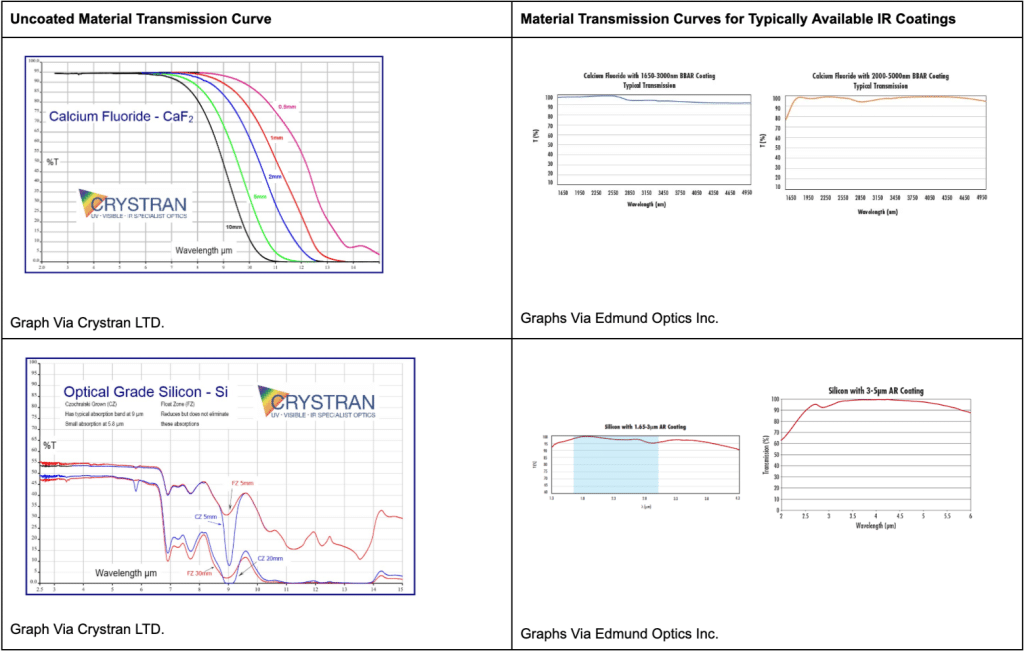
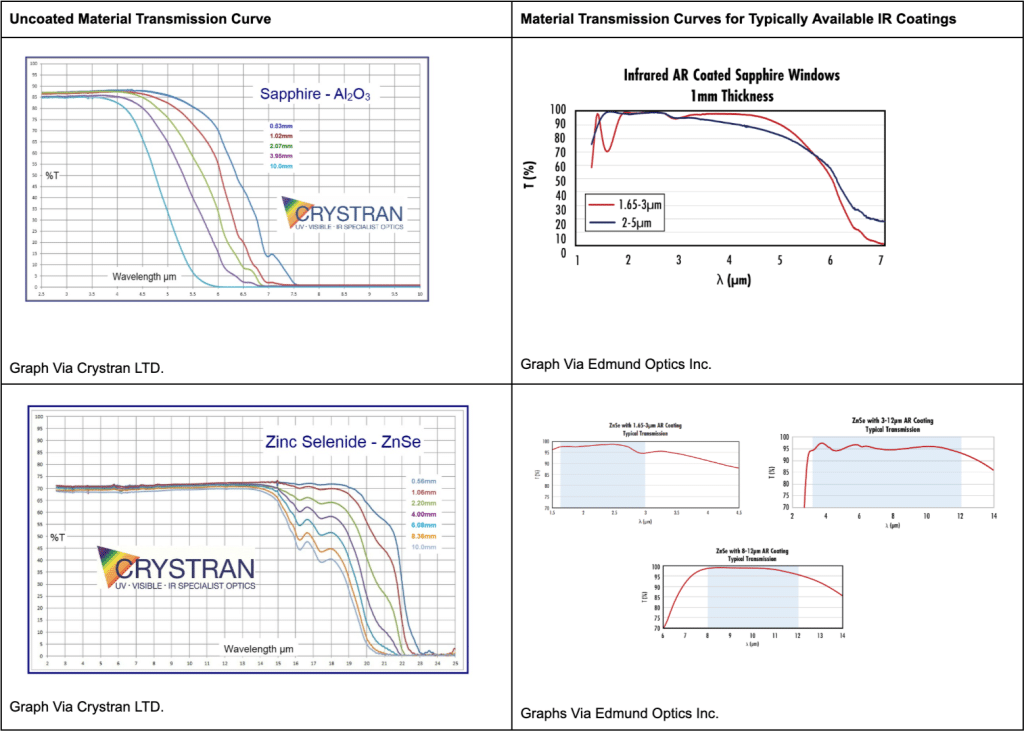
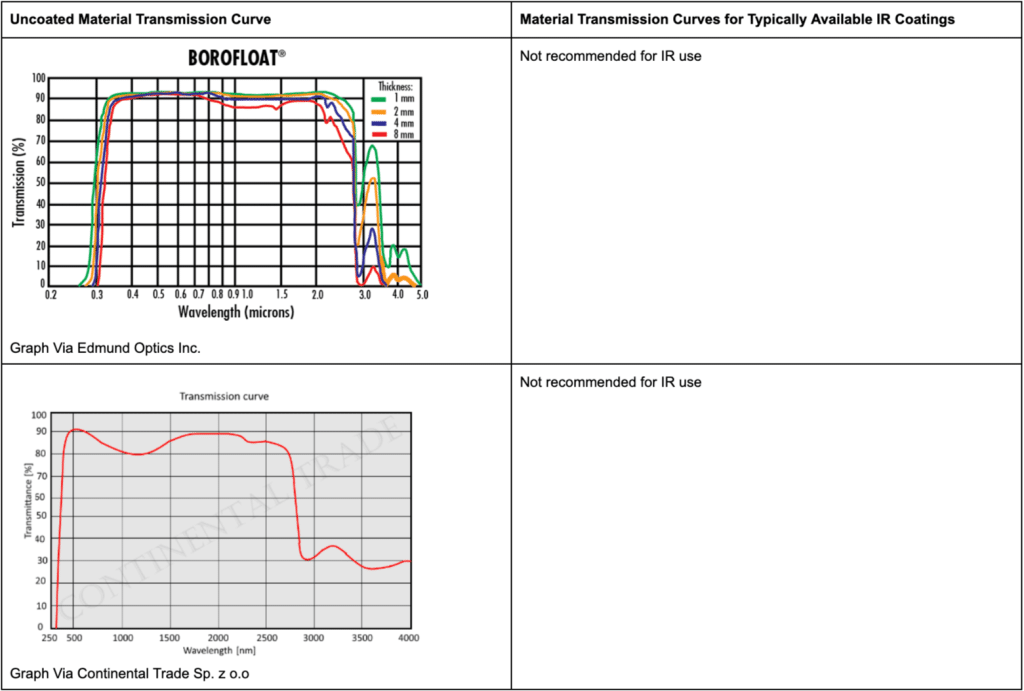
Conclusion
In conclusion, selecting the right window material for camera enclosures requires balancing several key factors: optical performance (including transmission range and refractive index), mechanical properties (such as hardness and material strength), environmental resistance (thermal, chemical, and impact durability), and practical considerations like cost and availability. Materials such as germanium, sapphire, zinc selenide, and specialty glass each offer distinct advantages and limitations depending on the application.
While germanium has long been considered the gold standard for infrared applications, its increasing cost and limited availability due to global trade restrictions highlight the importance of evaluating alternative materials. Ultimately, the best choice depends on the operating environment, imaging requirements, and budget constraints—requiring a tailored approach to ensure long-term reliability and performance.
Check out our window material properties chart below for a full comprehensive comparison.
About the author

Patrick Thomas
Manufacturing Product Engineer for Viper Imaging, Patrick earned a bachelor’s degree in mechanical engineering from Auburn University and is a licensed EIT (Engineer In Training). Known for his organizational skills and passion for research, Patrick applies an enthusiastic and creative approach to problem-solving.
Want to get in touch?

